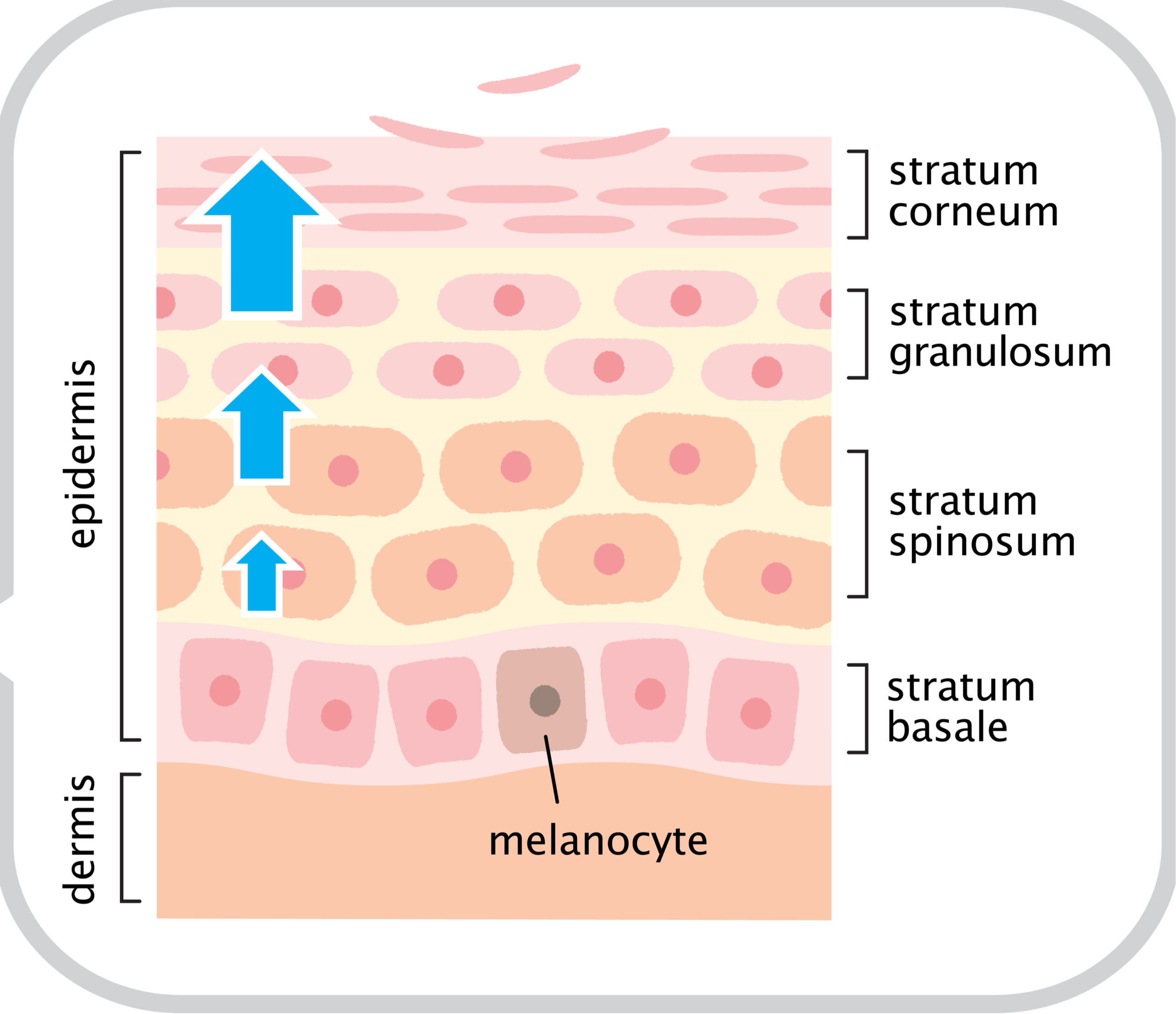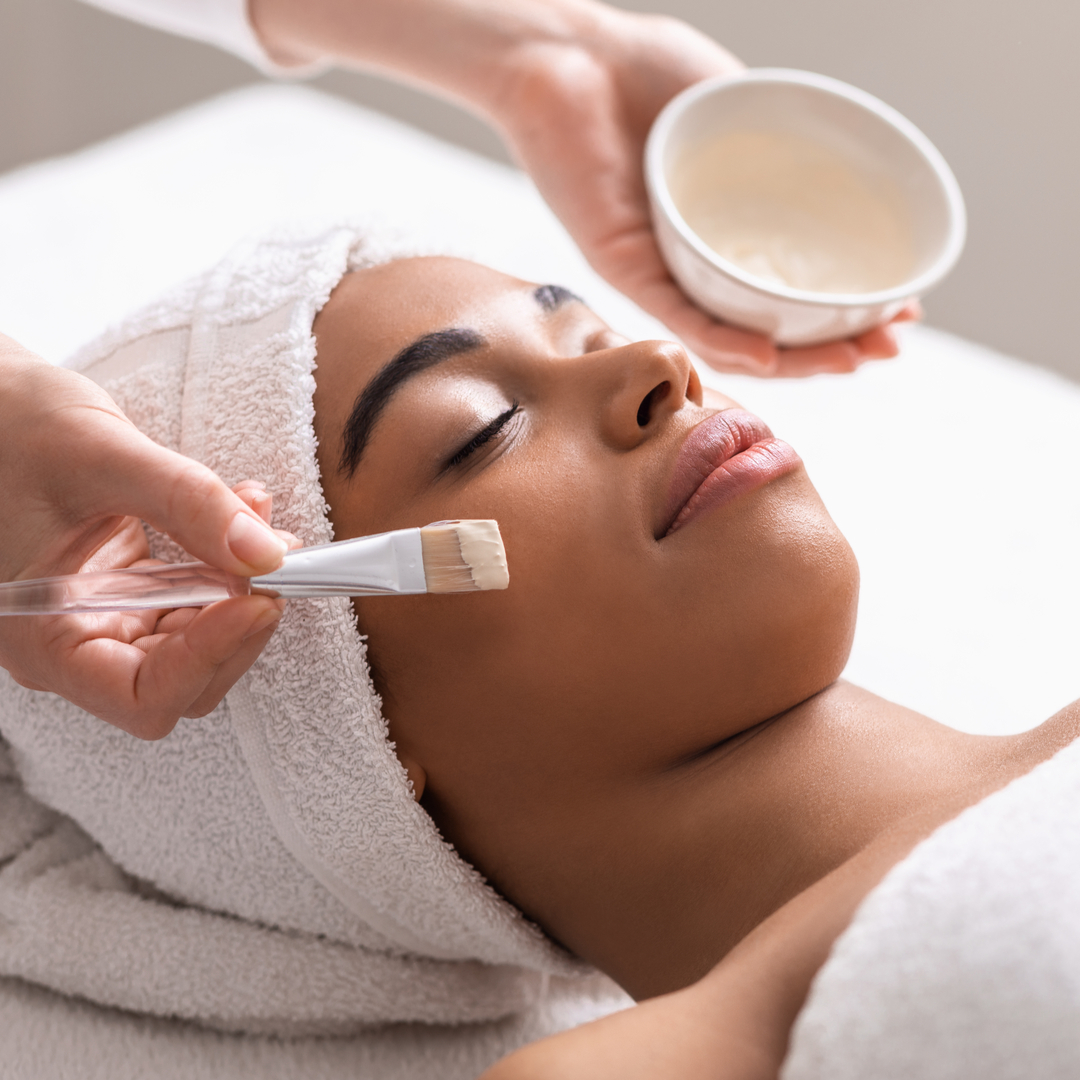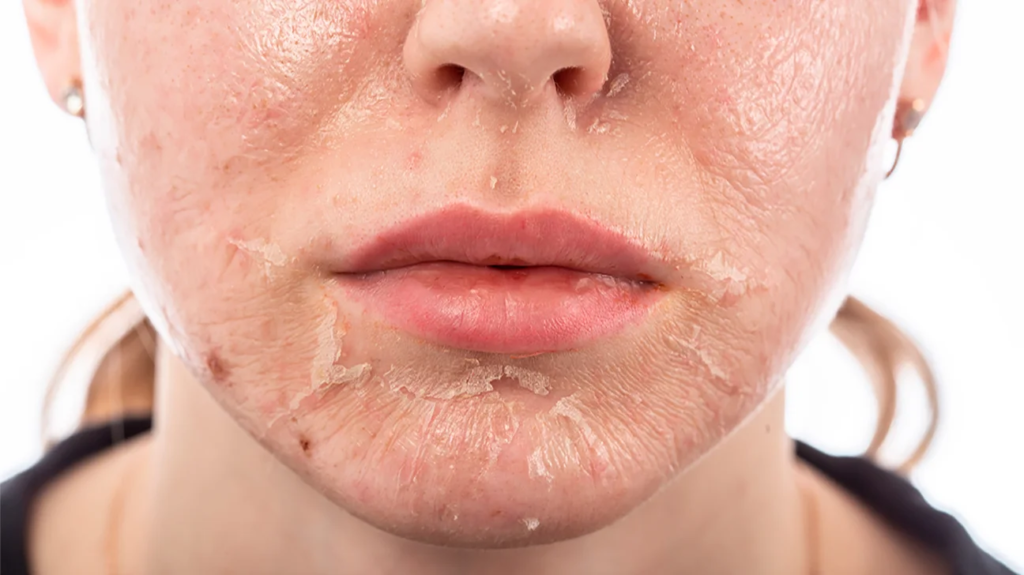What To Know About Chemical Peel Burn In order to prevent problems like these from occurring during your chemical peel procedure, it’s important to know what to expect before you begin. Chemical peel can do wonders when it comes to skin care and rejuvenation. Unfortunately, one of its side effects is “peeling” which results in redness, pain and mild swelling. But before you reach for that bottle of aspirin let’s examine what chemical peels are and how they can give you the smooth radiant skin you’ve always wanted. Read on to learn more Chemical Peel Burn Symptoms/How To Treat Chemical Peel Burn On Face. Out with the old and in with the new. Chemical peels treat fine lines, wrinkles, sun damage, pore size, acne, pigmentation, and more. These aesthetic treatments are some of the most sought-after, and millions of people are already enjoying the life-changing benefits. At AURAE MD in La Jolla, CA, we offer the widest variety of peels to reveal a new, radiant, you. Read on to find the top ten benefits of chemical peels. A chemical peel is a powerful skin exfoliating solution applied to the face, neck, or hands to reveal the smooth and clear skin underneath. What makes this technique so popular is that it’s useful for a variety of skin concerns. No, there are different peels. Peels are generally classified by their ingredients. Each skin condition may respond differently to the ingredients in a peel. For example, wrinkles, pigment problems, and superficial blemishes respond very well to a stronger peel. Acne often responds best to salicylic acid peels. Alpha-hydroxy (AHA), glycolic, lactic, or fruit acid peels are among the gentlest peels. Stronger options like trichloroacetic acid peels penetrate the skin more deeply and can rid the skin of wrinkles. All peels can provide skin rejuvenating benefits, but your skin’s type and condition dictates which peel to use. Contacting Dr. Margo Aura Emami is the best way to find out which peel is right for you. The exact process varies depending on the chosen peel. Your skin is thoroughly cleansed and prepared for the treatment before the application of the peel. Next, a chemical solution is applied to your skin and left in place for a designated time. While you wait, the peel solution exfoliates the skin. Once the peel has completed its work, it is peeled away to reveal new, regenerated skin. There is a peel for all the most common skin concerns. Below are the top ten benefits of a chemical peel. Topical acne treatments can only go so far, and a peel exfoliates deeper. Getting a peel cleanses your skin more thoroughly and reveals a fresh new layer of skin, without the acne. Peels for acne work best when received in a series, and Dr. Margo Aura Emami can customize a peel schedule to help keep your skin blemish-free. Large pores are a common concern for many, and all who have them wish they’d go away. Removing the outer, often damaged layer of skin with a peel has the benefit of making pores look smaller. Nothing leaves us stuck in the past as much as lines on the skin. These reminders prevent us from living in—and fully enjoying—the present moment. When fine lines or wrinkles have got you down, peels come to the rescue. These chemical solutions can permanently remove fine lines and ease even the toughest wrinkles. You deserve to feel confident, vibrant, and beautiful. If sunspots, discoloration, and hyperpigmentation are getting in your way, a peel can help. Many clients find that a peel lifts discoloration from the skin for good. When you don’t want the downtime of a facelift, a peel could be the right alternative for you. Skin lifting is one of the incredible benefits a peel offers. There is an implied permanence with scarring that isn’t accurate. Many scars from acne or anything else recede when exposed to the chemicals found in a peel. Uneven skin tone and blemishes add a dimension to the skin that many people don’t want. Peels bring balance to the overall texture of the skin. Peels are best known for unparalleled skin-smoothing benefits. By lifting rigid layers of skin from the face, neck, or hands, the result is gorgeously smooth and touchable skin. This treatment is one of the most effective options not requiring needles or surgery. Some clients pair this treatment with other treatments because of this. For others, it’s comforting to know that they can achieve their desired look without surgery. At AURAE MD, your peel is customized to ensure you get the most benefits from treatment. Whether you have a combination of concerns or a concern not listed above, there is a peel option for you. After receiving any peel, it’s essential to avoid the sun while your skin heals. Superficial peels take one to seven days to heal fully. Use lotion or cream on the skin while it heals. Wear sunscreen every day after your skin heals. You can wear makeup the day after your appointment. Medium peels take five to ten days to heal completely. The skin may peel during this time. If you have a history of cold sores, you may be advised to take antiviral medication during this time. Use a mild lotion or cream on the skin during the healing process. After five to seven days, you can wear makeup. Have you had an in-clinic chemical peel but didn’t experience any peeling afterwards? Were you disappointed that the treatment hadn’t worked? Don’t worry most people expect to have some peeling after a peel but it really depends on the condition of your skin at the time of chemical peel whether you peel or not. Our skin is in a constant renewal state and we shed our top layer on a daily basis. We shed very slowly, and as dead skin cells get washed or brushed away, we do not normally notice this. The cells are made deep in our skin and migrate to the surface to be shed. This process is quite quick in youth lasting about a four-week period extending to six weeks or longer as we get older. As the shedding slows down, so does the production of new cells leading to a build-up of a thicker layer of dead skin cells on the surface. Externally, this can give your skin a dull, dry appearance. The cells also change as they migrate to the top from being juicy and plump to flatter and dehydrated. They normally carry pigment to the surface with them. Once at the surface they are held by special bonds which ‘glue’ the cells together for a short period before they break away. During a chemical peel, a specially prepared acid or a combination of acid solution is applied on the surface of your skin. This breaks the bonds or ‘glue’ holding the cells together. Different acids are able to penetrate to different depths during the treatment. Over the following week, the cells separate away giving visible signs of flaking or peeling. Sometimes this may only be happening when you wash your skin so you may not be aware of the ‘peeling’. If the skin is particularly dehydrated at the time of the peel, you may experience more peeling. Deeper peels cause more extensive peeling. Whether you peel or not, you can be reassured that a good chemical peel would do its job- stimulate separation of the surface layer encouraging your skin to multiply faster. Hence reveal more radiant, hydrated skin. Occasionally if the skin is poorly prepared with no exposure to medical-grade products, it may react with side effects such as hyper (increased) pigmentation, inflammation or even scarring. It is possible to have an allergic reaction to the components of the peel in susceptible individuals. It is therefore recommended that your skin is prepared with the correct skincare before you have a chemical peel. This may be as little as two weeks or twelve to eighteen weeks depending on your risk factors. Those with a darker skin tone or a family history of darker skin tones are at increased risk of hyperpigmentation and need careful skin preparation. A chemical peel is a brilliant skin rejuvenation treatment to stimulate your skin to perform better. It is great at removing superficial pigmentation and improving superficial scars. By exfoliation, it can help to even out your skin tone. Chemical peels can be used to address uneven and rough skin texture by stimulating new skin production. It also helps to reduce fine lines and wrinkles as skin quality improves. In blemish-prone skin, the targetted chemical peel helps to shrink the pore and reduce sebum production. It will also reduce inflammation leading to fewer blemishes. How often you should have a peel really depends on the intended purpose. For acne and blemish-prone skin, gentle chemical peels are recommended every 2-3 weeks. For pigmentation, it maybe every 3-4 weeks. Skin rejuvenation peels maybe every 4-6 weeks. Once a course of a peel is completed you should really start a maintenance programme to sustain the results of the initial treatment course. You may also consider home peels when clinic attendance is unsuitable. If not maintained, the skin will revert back to its dull state lacking lustre. At Skin Enhance And Wellness, I offer a variety of chemical peels including prescription-only chemical peels. It is best to have a consultation first in person or remotely to assess suitability and start on home treatment to prepare for a chemical peel. The journey to a great chemical peel starts with finding the kind of peel best suited for you. It ends with ensuring that your skin gets the best care after the peel. For deep peels, you will have skin peeling in addition to the redness. Other side effects include the change of skin color, heart, kidney or liver damage, infection, and scarring. These effects can last for 7-10 days. Follow a very bland and basic skincare routine. Use a hyaluronic acid product as they help to moisturize, hydrate, and play an important role in wound healing. Look for ingredients like ceramides and cholesterol which function as ingredients identical to those found in the skin. They help to repair damage caused to the moisture barrier. A good moisturizer to use after a chemical peel is CeraVe. It comes with an addition of four percent niacinamide. Niacinamide is an antioxidant that has anti-aging benefits and helps to brighten skin tone. It also increases the production of collagen by your skin and is great for people with dry skin. However, a better alternative is Vaseline. Contrary to popular belief, it does not clog pores. It will prevent water loss and keep your skin hydrated. To speed up the healing of your chemical peel, make sure you use petroleum jelly. In addition to all the above, make sure to use sunscreen as the skin is very sensitive. Do not allow hot water to touch your face as it may cause post-inflammatory hyperpigmentation.
What To Know About Chemical Peel Burn
What Is a Chemical Peel?
Are All Chemical Peels the Same?
How Does a Chemical Peel Work?
10 Top Benefits of Chemical Peels
1. Treats Acne
2. Minimizes Pores
3. Erases Fine Lines and Wrinkles
4. Fades Discoloration
5. Lifts Skin
6. Soothes Scarring
7. Balances Texture
8. Smooths Skin
9. Non-Invasive Treatment
10. AURAE MD Customizes
Is There Anything to Avoid After a Chemical Peel?
Superficial Peels
Medium Peels
Chemical Peel Burn Symptoms
Skin’s natural cycle

What happens during a chemical peel?

What are the risks of a chemical peel?
What are the benefits of a chemical peel?
How often should you have a chemical peel?

How To Treat Chemical Peel Burn On Face
A chemical peel is a way of exfoliating skin using a solution that has a pH of around two. It helps to smooth out the texture of the skin making your face feel fresh. It helps to treat many skin issues like hyperpigmentation, acne, and wrinkles.
Chemical Peel Side Effects
The side effects that you may experience depend mainly on the type of peel used, its strength, and intensity. For light peels, you will have little to no side effects. Usually, you will get a little redness which resolves in an hour or two.
How to Care for Skin
Knowing the above, it is therefore important that you take care of your skin after a chemical peel. For at least 24 hours, it is important to ensure that you do not use products that have active ingredients like: